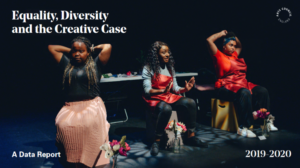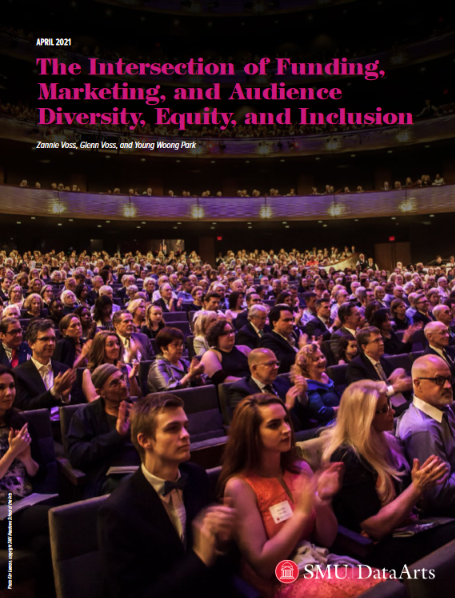June
2021
June 2, 2021
From the Field
To Stream or Not to Stream
 WolfBrown’s latest edition of Navigating the Crisis provides guidance for performing arts organizations on offering digital and live content as venues begin to reopen. Audience research indicates the majority of attendees are ready to resume live shows. However, with 15-20% of audience members not ready to resume in-person shows, Digital Strategies: To Stream or Not To Stream suggests a hybrid strategy of both live and digital performances for the foreseeable future. It provides a decision framework to help organizations think through digital strategies.
WolfBrown’s latest edition of Navigating the Crisis provides guidance for performing arts organizations on offering digital and live content as venues begin to reopen. Audience research indicates the majority of attendees are ready to resume live shows. However, with 15-20% of audience members not ready to resume in-person shows, Digital Strategies: To Stream or Not To Stream suggests a hybrid strategy of both live and digital performances for the foreseeable future. It provides a decision framework to help organizations think through digital strategies.
Race and Ethnicity in Pay for New Arts Administrators
The Los Angeles County Department of Arts and Culture, in collaboration with Claremont Graduate University’s Center for Business and Management of the Arts, has published a report comparing the compensation of entry-level arts administrators across race and ethnicity in the county. Make or Break: Race and Ethnicity in Entry-Level Compensation for Arts Administrators in Los Angeles County found the entry-level pay of white administrators to be 35% higher than BIPOC (Black, Indigenous and/or people of color) administrators. The report recommends steps that arts organizations and their funders can take to bring equity to starting arts administrators’ compensation.
Measuring Diversity within the Arts Sector in England
 Equality, Diversity and the Creative Case: A Data Report from Arts Council England provides a sweeping look at diversity within the arts council’s portfolio of organizations, audiences and staff, as well as the staff of the arts council’s workforce. The report includes an analysis of: the workforce of funded organizations, including the diversity of people in key leadership roles and at different job levels; ratings of diversity factors for funded organizations against a four-point scale; the diversity of applicants; audience diversity; and the diversity of the arts council’s workforce, leadership and national and area councils. The issue continues to be a matter of concern for a sector that does not yet fully reflect the people of England. The report could be useful to state arts agencies measuring diversity within their own portfolio or planning to measure against stated objectives.
Equality, Diversity and the Creative Case: A Data Report from Arts Council England provides a sweeping look at diversity within the arts council’s portfolio of organizations, audiences and staff, as well as the staff of the arts council’s workforce. The report includes an analysis of: the workforce of funded organizations, including the diversity of people in key leadership roles and at different job levels; ratings of diversity factors for funded organizations against a four-point scale; the diversity of applicants; audience diversity; and the diversity of the arts council’s workforce, leadership and national and area councils. The issue continues to be a matter of concern for a sector that does not yet fully reflect the people of England. The report could be useful to state arts agencies measuring diversity within their own portfolio or planning to measure against stated objectives.
When We Reopen, Whom Will We Gather?
 SMU DataArts has released The Intersection of Funding, Marketing, and Audience Diversity, Equity and Inclusion, a new report looking at how performing arts organizations can improve audience diversity, equity and inclusion. Using prepandemic data from 24 large, Eurocentric performing arts organizations, this study examines how donor priorities, locations, subscriber bases and marketing play a role in the equitable attendance of local community members. It found that BIPOC (Black, indigenous and/or people of color) and lower-income segments of the community were significantly underrepresented in the audiences at the organizations examined. The report offers a series of recommendations for organizations and implications for funders.
SMU DataArts has released The Intersection of Funding, Marketing, and Audience Diversity, Equity and Inclusion, a new report looking at how performing arts organizations can improve audience diversity, equity and inclusion. Using prepandemic data from 24 large, Eurocentric performing arts organizations, this study examines how donor priorities, locations, subscriber bases and marketing play a role in the equitable attendance of local community members. It found that BIPOC (Black, indigenous and/or people of color) and lower-income segments of the community were significantly underrepresented in the audiences at the organizations examined. The report offers a series of recommendations for organizations and implications for funders.
Humanities Impact Survey Toolkit
The National Humanities Alliance (NHA), together with the National Endowment for the Humanities (NEH), has created a Humanities Impact Survey Toolkit based on four years of research on NEH-funded projects. The toolkit includes tips for evaluating the public impact of humanities programs in community and higher education settings and contains survey questions organized by impact. Recently NHA added survey examples to cover questions regarding COVID-19, race and the inclusion of underrepresented histories in programs.
Cultivating Empathy in Museum Visitors
 The Minneapolis Institute of Art’s [Mia] Center for Empathy and the Visual Arts has been studying the effect of the visual arts on human empathy. Together with UC Berkeley’s Social Interaction Laboratory, the museum is developing and sharing strategies for cultivating empathy in art museums. Empathy Interventions: Mia Experiments with Cultivating Empathy in Museum Visitors offers case studies on fostering empathy, which in turn can reduce prejudice, decrease inequity and improve health.
The Minneapolis Institute of Art’s [Mia] Center for Empathy and the Visual Arts has been studying the effect of the visual arts on human empathy. Together with UC Berkeley’s Social Interaction Laboratory, the museum is developing and sharing strategies for cultivating empathy in art museums. Empathy Interventions: Mia Experiments with Cultivating Empathy in Museum Visitors offers case studies on fostering empathy, which in turn can reduce prejudice, decrease inequity and improve health.
In this Issue
From the President and CEO
State to State
- Florida: Grant-making Task Force
- Louisiana: Bayou Culture Collaborative
- Vermont: CreateVT Action Plan
Legislative Update
The Research Digest
Announcements and Resources
More Notes from NASAA
SubscribeSubscribe
×
To receive information regarding updates to our newslettter. Please fill out the form below.
